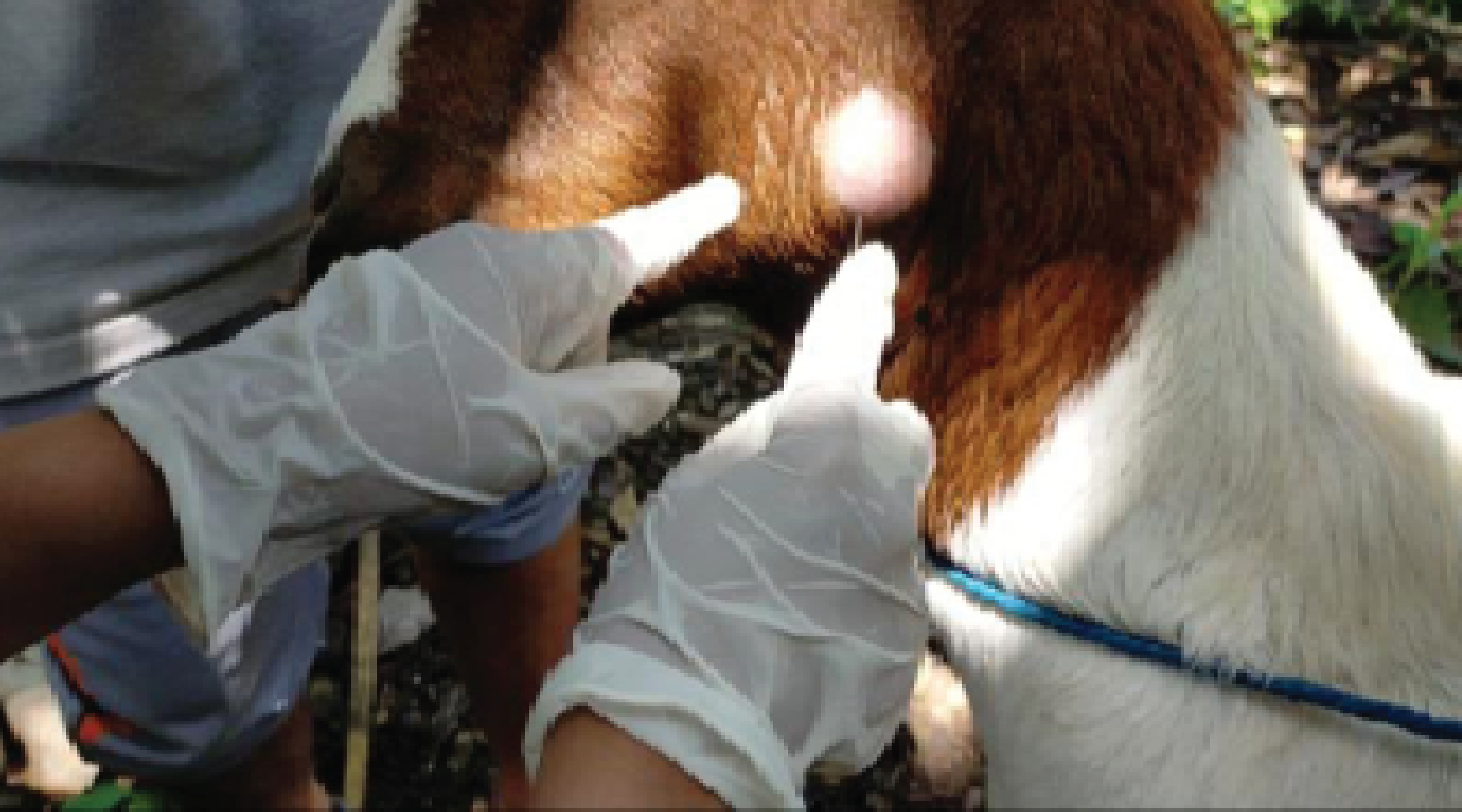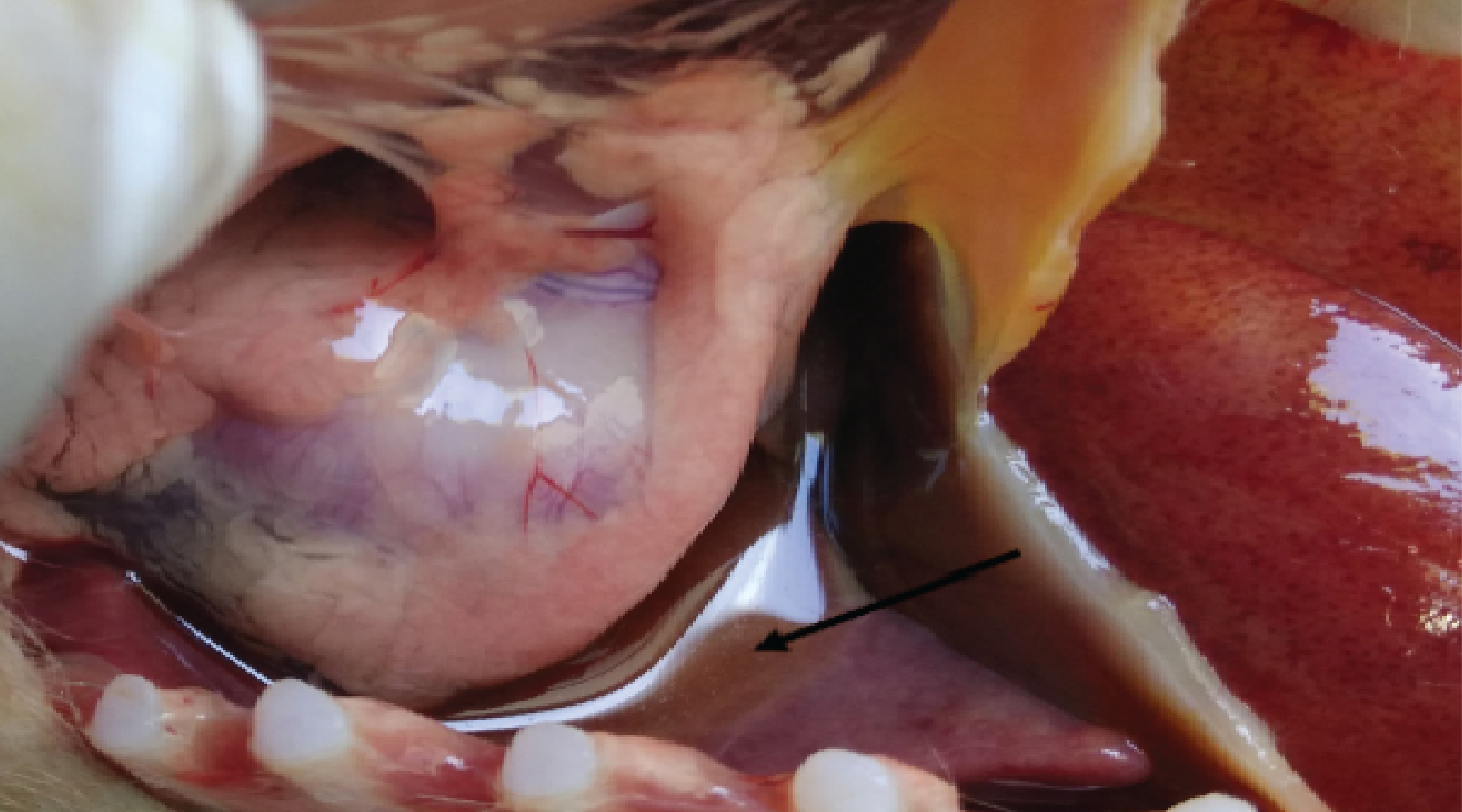The Incidence Rate of Helminthiasis in The Digestive Tract of Dairy Cattle in The Partnership of PT. Greenfields Indonesia
Downloads
Background: One of the partnerships of PT. Greenfields Indonesia is located on the slopes of Mount Kawi, precisely in Pijiombo, Ngadirenggo Village, Wlingi District, Blitar Regency. The tropical situation in this area is very humid and has high rainfall. It causes dairy cattle to be infected with helminths. Therefore, observations of the incidence rate of gastrointestinal helminthiasis in dairy cattle are needed. Purpose: To determine the prevalence of gastrointestinal helminths in dairy cattle in the partnership of PT. Greenfields Indonesia. Method: Fecal samples from 36 dairy cattle were collected and examined using native, sedimentation, and flotation techniques. Result: Indicated that the prevalence of gastrointestinal helminths in the dairy cattle was about 66,66%. There were 24 dairy cattle positively and 12 cattle negatively. Helminth species found included class Nematoda (Haemonchus contortus, Oesophagostomum radiatum, Bunostomum phlebotomum, Mecistocirrus digitatus,and Gaigeria pachyscelis) and Cestoda (Moniezia expansa). Conclusion: The incidence rate of helminthiasis was quite high dairy cattle in the partnership of PT. Greenfields Indonesia.
Dwinata, I. M., Ida Ayu P. A., Suratma, N.A., Made Oka, I. B. 2017. Modul Indentifikasi Parasit Cacing. Fakultas Kedokteran Hewan Universitas Udayana.
Inanusantri. 1998. Parasit Cacing Hemonchus conturtus (Rudolphi, 1803) pada Domba dan Akibat Infestasinya. Skripsi. Bogor: Fakultas Kedokteran Hewan. Institut Pertanian Bogor.
Kusnoto, S., Subekti, S. M., Sosiawati, S.M., Koesdarto. 2015. Ilmu Penyakit Helmin Kedokteran Hewan. Surabaya: Zifatama Publisher.
Koesdarto, S., Paramitha, R. P., Ernawati, R. 2017. Prevalensi Helminthiasis Saluran Pencernaan Melalui Pemeriksaan Feses pada Sapi di Lokasi Pembuangan Akhir (LPA) Kecamatan Benowo Surabaya. Journal of Parasite Science Vol. 1(1): Pp. 23-32
Koesdarto, S., Subekti, S., Sosiawati, S.M., Puspitawati, H., Kusnoto. 2007. Buku Ajar Ilmu Penyakit Nematoda Veteriner. Surabaya: Departemen Parasitologi Fakultas Kedokteran Hewan Universitas Airlangga. Surabaya.
Koesdarto, S., Subekti, S., Sosiawati, S.M., Puspitawati, H., Kusnoto. 2007. Buku Ajar Ilmu Penyakit Trematoda dan Cestoda Veteriner. Surabaya: Departemen Parasitologi Fakultas Kedokteran Hewan Universitas Airlangga.
Larasati, H., Hartono, M., Siswanto. 2017. Prevalensi Cacing Saluran Pencernaan Sapi Perah Periode Juni-Juli 2016 pada Peternakan Rakyat di Provinsi Lampung. Jurnal Penelitian Peternakan Indonesia Vol. 1(1): Pp. 8-15
Mukhtar, R. S., Hambal, M., Hanafiah., Yudha, F., Winaruddin., Manaf, Z.H. 2016. Perkembangan dan Gambaran Anatomis Larva Infektif (L3) Haemonchus contortus yang Dibiakkan dengan Vermicullite. Jurnal Medika Veterinaria Vol. 10(1): Pp. 62-66
Nezar, M. R., Susanti, R., Setiati, N. 2014. Jenis Cacing pada Feses Sapi di TPA Jatibarang dan KTT Sidomulyo Desa Nongkosawit Semarang. Unnes Journal Life Science Vol. 3(2). Pp: 93-102
Nugraheni, N., Eulis, H. A., Yuli. 2015. Identifikasi Cacing Endoparasit pada Feses Sapi Potong Sebelum dan Sesudah Proses Pembentukan Biogas Digester Fixed-dome. Students e-Journals 4 (3) : 1-8.
Siregar, S.B. 2003. Teknis Pemeliharaan Sapi Perah dan Analisis Usaha. Jakarta: Penebar Swadaya.
Sosiawati, S.M., Subekti, S., Koesdarto, S., Kusnoto. 2017. Buku Ajar Ilmu Penyakit Helmintologi. Surabaya. Fakultas Kedokteran Hewan Universitas Airlangga.
Yuswandi., Yuniar, R.S. 2015. Studi Biologi Larva dan Cacing Dewasa Haemonchus contortus pada Kambing. Jurnal Sain Veteriner Vo.33(1): Pp.43-47
Williamson, G., Payne, W.J.A. 1993. Pengantar Peternakan di Daerah Tropis (An Introduction Animal Husbundary on the Tropic). 5th Ed. Yogyakarta: Gadjah Mada University Press.
Zalizar, L. 2017. Helminthiasis pada Saluran Cerna Sapi Perah. Jurnal Ilmu-Ilmu Peternakan Vol. 27(2): Pp. 116-122.
Copyright (c) 2020 Wenny Nur Azizah, Dony Chrismanto, Sri Pantja Madyawati, Hana Eliyani

This work is licensed under a Creative Commons Attribution-ShareAlike 4.0 International License.
- The journal allows the author to hold the copyright of the article without restrictions.
- The journal allows the author(s) to retain publishing rights without restrictions.
- The legal formal aspect of journal publication accessibility refers to Creative Commons Attribution Share-Alike (CC BY-SA).

Journal of Applied Veterinary Science and Technology is licensed under a Creative Commons Attribution-ShareAlike 4.0 International License





























